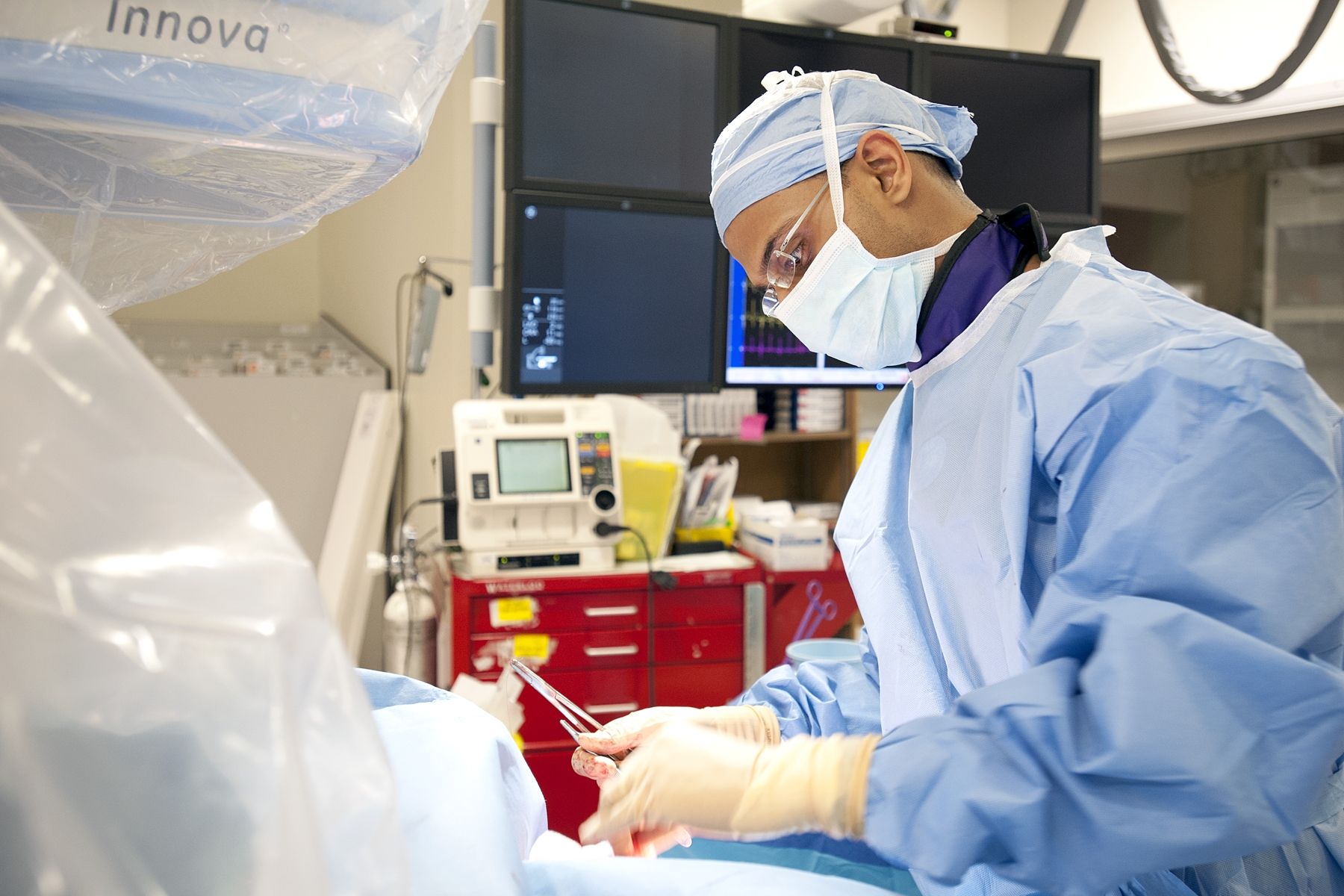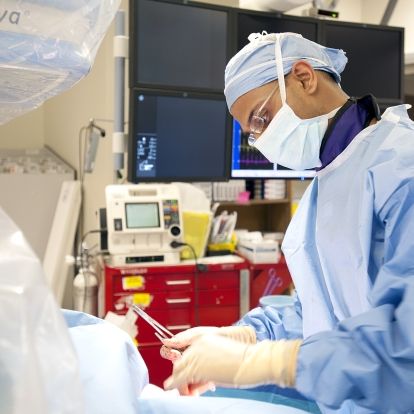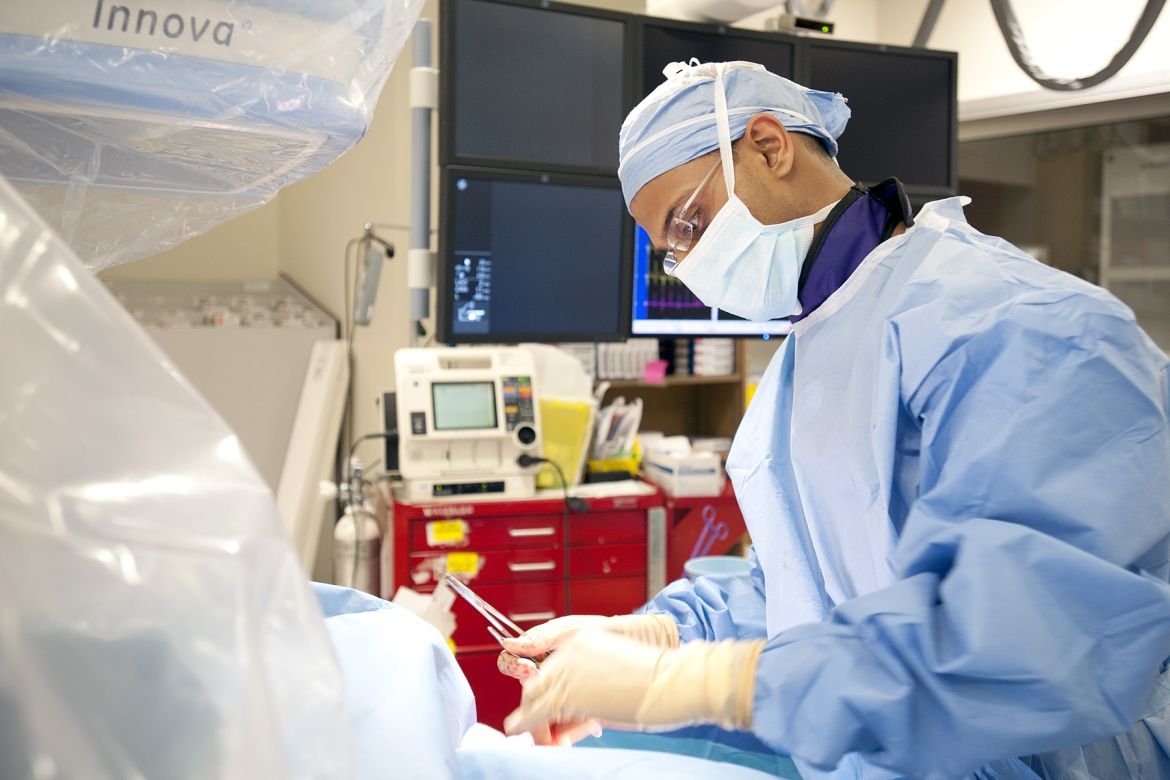Effective immediately masking is required for everyone when present on all inpatient units, in the Emergency Department (ED), the Urgent Care Centre (UCC), and the Children’s Outpatient Centre (COPC).

It's a notion our cardiac program took to heart some time ago -- put the patient first, and the rest will follow. A glance at our Q3 results show just how well the strategy is paying off. All of the program's milestones are coloured green, meaning they are right on target.
For wait times, we are meeting or bettering provincially set targets for cardiac bypass surgery, coronary angiography and coronary angioplasty (stenting). The program also continues to meet 100 per cent of its targeted volumes for the same three procedures.
It all comes down to good old fashioned interprofessional relationships, respectful trust and patient-centredness.
— Dr. Chris Simpson
“There is no magic formula,” says Dr. Chris Simpson, Cardiac Program Medical Director. “It all comes down to good old fashioned interprofessional relationships, respectful trust and patient-centredness.”
Simpson says it all began with a decision to nurture close relationships with our regional partners to build a seamless system. In practice, this means whenever a referring physician calls to indicate that a patient needs tertiary level cardiac care, the patient is brought promptly to KGH. In return, those other healthcare providers bend over backwards to take their patients back once KGH has done its part in their care.
“There are no barriers thrown up by our regional partners,” says Simpson. “It's something I think a lot of other services would love to see.”
Another factor that's allowed the cardiac program to shine is the way it is allotted money by the Ministry of Health and Long Term Care. Unlike other programs, it's allowed some flexibility in how it spends its budget.
“We spend the same amount in total each year, but by being able to shift from pacemakers to angioplasty or from surgery to defibrillators we've been able to be very responsive to the true need that is out there,” he says.
The cardiac program also worked out a new protocol with the province a few years ago that allows ambulances to rush people having heart attacks straight to the KGH Catheterization Lab, rather than the nearest hospital emergency room. This was recently expanded to include nearly all of the SE LHIN.
The result of all this cooperation and innovation is perhaps shown best in our volumes. Each year, our cardiac program does 3,000 angiograms (imaging of the heart) and 1,000 angioplasties (stents).
“That's a lot of patients,” says Simpson. “But the fact that we are able to do them all while keeping our wait times so favourable also shows that the province has set these targets appropriately.”
But looking ahead there are challenges for a program as technologically intensive as cardiology.
Some of the newer procedures it is now carrying out aren't measured yet on our corporate indicators, and some of those have yet to reach a steady state. Genetic testing for inborn cardiac diseases and advanced catheter ablation procedures for arrhythmias are two such examples. And the program hopes to soon launch a new procedure that allows for valve replacement to be done through a catheter, rather than in open heart surgery.
“All of these areas are things we need to continue to develop and excel at if we are to remain a leading academic cardiology centre,” says Simpson. “But if we focus on improving things for the patients, as always, we're confident the indicators will go in the right direction.”
To learn more about our corporate milestones and indicators, browse our Quarterly Reports.
Gallery


Cardiac program hitting its stride and all its milestones.



